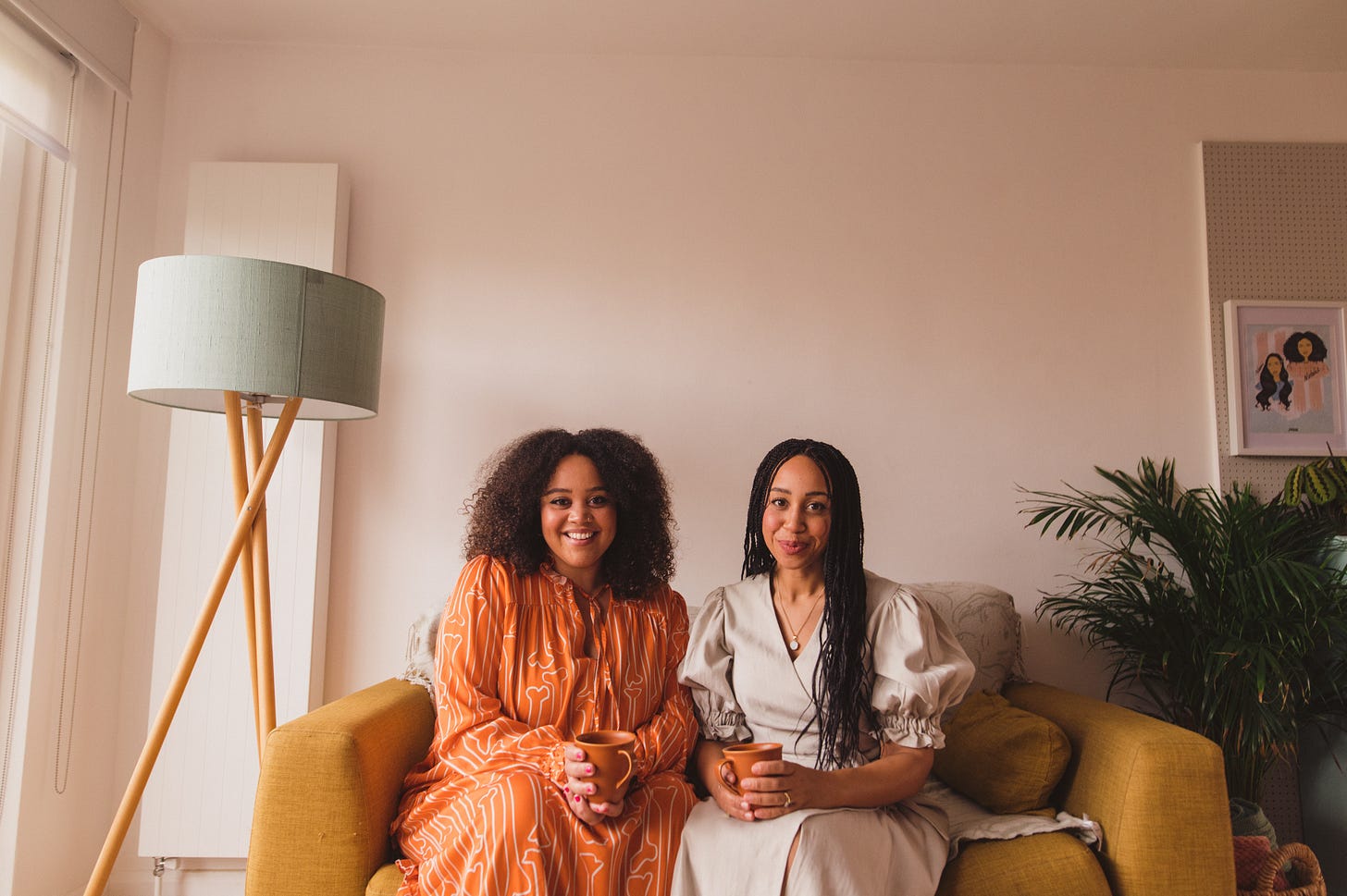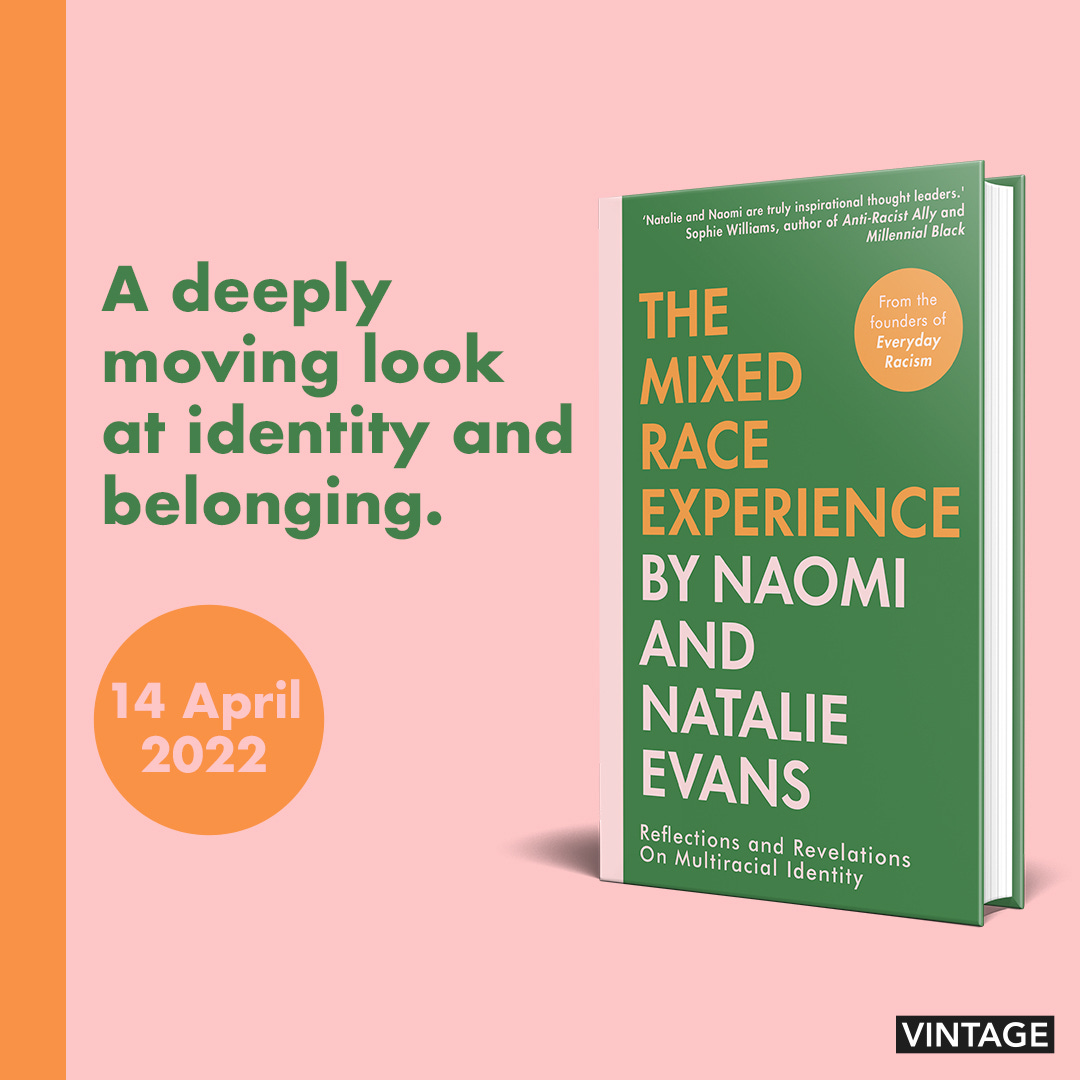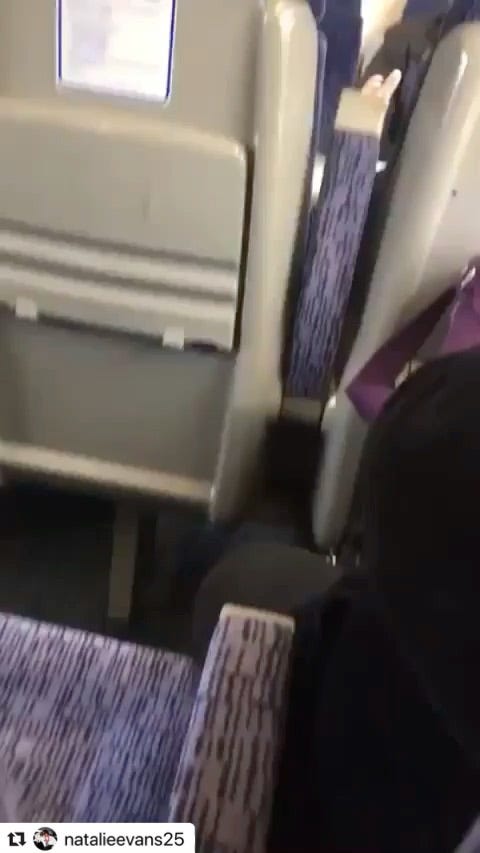Natalie and Naomi Evans: “Monoracial parents don't understand mixedness”
The founders of Everyday Racism on changing narratives and Mel B
Photographer: Rebecca Douglas
Hi, welcome back to Mixed Messages! This week, I’m speaking to sisters Natalie and Naomi Evans, the founders of Everyday Racism. The platform began in May 2020, after Natalie recorded the abuse of a guard on a train. Speaking up for the guard, the sisters realised now was the perfect time to launch their anti-racist platform. Now, Natalie and Naomi are gearing up to release their first book, The Mixed Race Experience, on April 14th. Read their stories of growing up mixed in Britain below.
How do you define your ethnicity?
Natalie: I say mixed-race and Black. Even if I say I’m mixed-race, people will just say that I’m Black. The term mixed-race has its problems, but it’s the best descriptor for me. Other terminologies, like biracial or dual heritage, are more limited – I want to steer away from the idea that being mixed-race means there are just two parts of you. That’s where I’m at right now, but that might change in a year.
Naomi: I generally say mixed-race. There are times I’ll just say Jamaican and English, which is my preference because I’m trying to move away from race as a binary because it’s a social construct.
Have you been on a journey to accepting your heritage?
Naomi: I think it has a lot to do with where you grew up. We grew up in a white majority seaside town where there’s very little representation. We spent a lot of time feeling that there was something not right with us because we didn’t see ourselves reflected back. We’re still working through that, but we’re more comfortable than we ever have been in ourselves.
Natalie: I was really proud of my identity, but I knew it would be easier to integrate in secondary school if I straightened my hair and listened to different music. When the Black Lives Matter movement started gaining global awareness after George Floyd’s murder, I asked Naomi, “does that include us?” That’s when I realised that I didn’t understand where I fit. Now, after starting Everyday Racism and having so many conversations, I’m more aware of who I am.
Did you ever speak about being mixed as a family?
Naomi: Mum has always been comfortable talking to us about race and identity. She says that she didn’t always know if she was doing the right thing, and she felt quite isolated. She asked a woman called Veronica for help in a shop once for where to get our hair done and they became close friends – Veronica is an important part of our lives.
If your parents are monoracial, they don’t understand what it’s like to be mixed. You might have your siblings, but you don’t always have the same background, so where do you go? Who do you talk to?
Natalie: I don’t think there was a time that she sat us down, but there were moments throughout our lives where we’d talk. There’s this narrative that if our mum was Black, things would be different, or if our dad was around, we’d be more in touch with our Jamaican side. But it doesn’t mean that if the dominant parent is non-white, then suddenly your child is going to grow up differently. My dad might understand racism, but not what it’s like to be mixed-race. It’s a very different experience.
Naomi, how are you talking to your children about race?
Naomi: They’re four and seven, and hair has come up already. We talk a lot – I don’t want them to go through what I did. The representation is so much better these days, which helps.
Was there anyone you felt represented you growing up?
Natalie: Not really, apart from Scary Spice. It was amazing to see someone that looks like and has hair like me, but I had to be Mel B in everything, even in a Cinderella play at school. My mum was forever going down to sort these things out.
Now, there’s a plethora of people to choose from. In my early 20s, the media decided they needed to be more diverse and hired lots of light-skinned Black people – so I was represented everywhere and couldn’t complain. But then that’s really problematic because it’s rooted in colourism. I realised things had only gotten better for me, not darker-skinned people.
Now, I look up to Meghan Markle. I cried at that wedding, thinking of being a little girl and not having any princesses who looked like me. Naomi, I feel like yours was All Saints.
Naomi: Yeah, if I saw people in music, I would be drawn to the Black women. So Shaznay Lewis in All Saints, Whitney Houston too because it was the first time I’d seen a woman with hair like mine. I loved Alexa Chung too, I’d try to get her hair. I wonder what it would be like if we’d grown up with the natural hair movement. Emma Dabiri is someone I admire, especially the way she talks about race and hair.
Talk to me about Everyday Racism – how did that start?
Natalie: After George Floyd’s murder, I’d heard people say “I’m so glad that’s in America and not here.” I wondered how people didn’t realise that it happens here every single day. I made a video that was only supposed to be for friends and family, but it went viral. When we saw the feedback to the video, we realised it was time for the Everyday Racism platform. We wanted to highlight Black and brown voices, sharing stories and resources. We want to amplify darker-skinned Black women as well, and not make it all about trauma.
Naomi: From that came the book. We’d read Reni Eddo-Lodge’s Why I’m No Longer Talking To White People About Race, and thought “but what if you don’t have a choice but to talk to your family?” That’s where The Mixed Race Experience came from. It will touch on racist family members, how to help your children understand themselves better, hair, all of those things. We wanted to write something that we wish we’d had when we were younger.
How do you think the mixed conversation needs to develop?
Naomi: I think there’s been a narrative of mixed people being confused. That needs to change, we need to start allowing people to choose how they identify in the way that they feel most comfortable.
What's the best thing about being mixed?
Natalie: I love having two cultural sides, the food is good too. I love the community that comes with my Black side especially. I like being different, I have something about me and people are intrigued, even if it’s sometimes invasive and rude.
Naomi: Being able to draw on two different things, I feel like I’ve got the best of both worlds.
How would you define your mixed ethnicity in one word?
Naomi: Intricate
Natalie: Inspiring
Pre-order The Mixed Race Experience now. Next week, I’ll be talking to Sarah Karmali, Digital Editor of Harper’s Bazaar. Subscribe to get Mixed Messages in your inbox on Monday.
Enjoy Mixed Messages? Support me on Ko-Fi so I can continue to grow this newsletter! Your donations, which can start from £3, help me pay for the transcription software needed to keep this newsletter weekly.
Mixed Messages is a weekly exploration of the mixed-race experience, from me, Isabella Silvers. My mom is Punjabi (by way of East Africa) and my dad is white British, but finding my place between these two cultures hasn’t always been easy. That’s why I started Mixed Messages, where each week I’ll speak to a prominent mixed voice to delve into what it really feels like to be mixed.










I'm really looking forward to this book. I'm a monoracial (black) mum, to 2 mixed (black and white) children (3 and 1) and I find it so difficult to read that they may feel that I won't be able to understand their mixedness. They are going to grow up in a predominantly white area, but our home is filled with black media from the books they read to the artwork around the house. We openly discuss the colour of skin and hair and all the things that make them them. It's such a struggle finding and connecting with mixed families outside of London and I really do hope that we are doing enough for them to feel seen and heard and loved and appreciated. I really love this newsletters they are really thought provoking and good discussion points.
I love the platform these girls have created and have been following them following since the George Floyd murder also. My girlfriend is mixed race (White British and black Jamaican) and although we are both from East London, where it is pretty diverse, she has told me about how she grew isolated through school and beyond and has experienced racism from white counterparts and colourism from black counter parts. She is like Naomi and Natalie in that she is starting to feel more confident in her own skin and hair as she grows older but we have recently moved into a suburban Essex area that is predominately white and that in itself is brining it’s own new challenges. I cannot wait to get this book next year and continue to read what the girls are saying, it has been an invaluable resource to me to better understand what my partner is going through and has made our conversations a lot more informative. Congratulations on the book and Thank you!